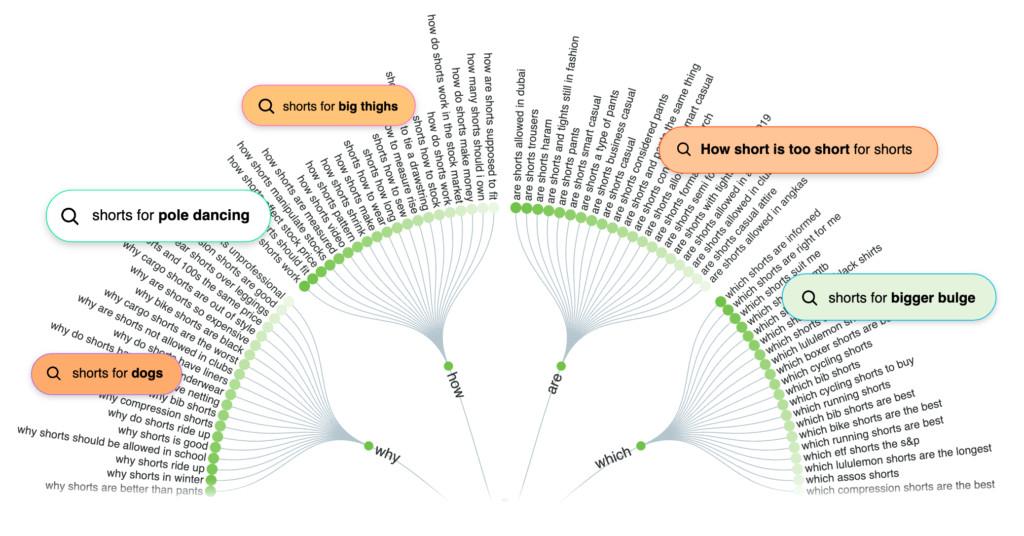Whether you’re just starting out on your blogging journey or you’re an experienced blogger with several years of experience, if you’re not utilising a content plan, you’re doing it all wrong.
Imagine a large company with no brand values, no mission and no direction, that’s the equivalent of a website without a content plan.
So what is it and how do you start your own content plan?
We’ve got you covered with our step-by-step guide on how to create a content plan for your UK blog that’ll make organising, writing and publishing your posts a well-polished machine.
Brand new to blogging? Don’t miss our detailed tutorial on how to start a popular, profitable blog in the UK from scratch.
What is a content plan?
When you’re creating content, it’s easy to get overwhelmed. There are so many different routes to content creation and so many different ways to do it.
A content plan is a way to make sure that everything that needs to be done gets done and in the right order. A good content plan will help you keep track of deadlines, set goals for each piece of content, and give you an idea of what needs to be done at any given time.
A content plan will typically take the form of a spreadsheet that contains at the bare minimum:
Topic/blog post title – The H1 and Meta Title.
Target keyword – The search term the blog post is targeting.
Writer name – The name of the writer assigned to the blog post.
Deadline – When the blog post needs to be completed.
Progress stages – Open/Assigned/In Review/Published
Other additional columns that can help level up your content plan include:
LSI keywords – Any other keywords you would like to target in your post
Internal linking opportunities – Opportunities to link to other posts that have already been published on your website.
Estimated search volume – How many people search for this topic on a monthly basis?
Research articles – Authoratitive or scholarly articles that can be used to gain a deeper understanding of the topic.
External link targets – External websites you would like to link to in the article.
Word count – A target word count for the post.
Search intent – What the search intent is for the topic. You can learn more about what search intent is here.
While you don’t need all of these additional columns in your content plan it can really help to focus your efforts and provide additional resources, particularly if you’re outsourcing your article writing.
Why you need a content plan
Having a detailed up-to-date content plan will really take your content production to the next level and gives a wide range of benefits:
- You’ll have an easier time keeping up with deadlines
- You can stay organized by knowing which types of posts need to be written at certain times
- You can create complimentary content at the right time for your blog and your readers
- It stops analysis paralysis when looking for new topics to write about
- It keeps you motivated and shows your progression
- It’s a document you can provide to writers and editors
Now we know what a content plan is and why you need one let’s look at some ways you can start to populate your plan with juicy topics ready for you or your writers to sink their teeth into.
How to find content ideas for your content plan
Populating your content plan is a strategic task. Get it right and you can quickly double your traffic, get it wrong and it can feel like crickets when you’re checking your analytics.
We’re going to share all the methods we use to create a content plan that drives consistent engaged traffic to our websites.
Competitive research
Competitive research requires an analysis of your direct competitors. You want to ascertain the exact strategy they’re using to drive traffic and revenue to their website.
To do this you’re going to need to use a tool like Semrush or Ahrefs to take a deep dive into the specific keywords that are responsible for delivering traffic and the pages and posts they’re using to do it.
Both of these tools can show you in micro detail which pages are ranking for specific keywords and their estimated search volume.
Using this knowledge you can easily create a list of topics that you already know bring traffic to your competitors. Now you just have to produce a better piece of content to outrank your competition.
Answer The Public
Answer The Public is a search listening tool. It gives you access to data directly from Google by compiling all of the possible autocomplete queries created from a stem keyword.
It’s a genuine snapshot into all of the informational queries surrounding a particular topic and is invaluable to marketers and most importantly anyone trying to create relevant content for their audience.
It’s a great way to uncover underserved topics (queries that have very few relevant results on search engines) backed by real search volume and can save you hours creating content that will never be searched for or consumed.

Keyword research
If you haven’t got access to any SEO tools then you can do some good old-fashioned keyword research to start uncovering new topics for your blog.
Here’s an example of a method we use that can help uncover nearly infinite keywords ideas for your content creation:
- Open up a Google search in a new tab
- Start by typing in a seed keyword
- Hit the space bar and then type the letter ‘a’
- Look down the list of potential searches for new topics
- The higher up the list the higher the monthly search volume
- Record any topic opportunities
- Repeat for the letter ‘b’ and so on
This technique often referred to as ‘alphabet soup’ is a surefire way to cover your niche in micro detail and is a fantastic way of building topical authority.
Forums and communities
Forums and communities are a great way of finding out about new developments in your niche before they hit the mainstream.
Typically frequented by experts on the subject matter they offer an interesting insight into the cutting-edge topics being discussed by your audience.
We use forums to inspire our longer-form content that can really dig into the topic and provide a more structured response for searchers.
How to prioritise the topics in your content plan
Now you’re suffocating under a pile of potential topics for your content plan it’s time to organise them into a structured timeline so you know exactly which post needs to be created and when.
There are three key things to consider when you’re trying to schedule your new posts.
Competition
Can I rank for the topic I’m going to write? As with all things Google, it depends. But there are some key indicators you can look for in search results to give you a good idea.
Domain authority (DA) – This 1-100 metric was created by Moz to quickly analyze the quantity and strength of backlinks pointing at a website. Websites like Wikipedia and LinkedIn sit in the high 90s while new websites start out with a whopping score of 1.
By installing the Ubersuggest Chrome Extension you can quickly see the DA of every website displayed on a search engine results page (including your own).
You’ll find it under each search result displayed like this:

The next key factor is word count, as a general rule, a larger word count represents a deeper understanding of a topic and is rewarded on search engines.
I like to take the top three results on Google, add them up and divide by 3, if the result is under 1000 you probably have an opportunity to expand on the topic and win position 1.
You can now prioritise your content plan based on competition, starting with topics that are only covered by websites with a low DA or a lower DA than your website and that only have a small word count on the topic.
Click here to learn more about domain authority and its importance for an effective SEO strategy.
Content silos
A content silo refers to a number of topics (posts) that all cover the same overarching subject matter and are internally linked together.
Content silos are designed to achieve topical authority around a subject by creating a piece of content for every single query surrounding that subject. These interconnecting pages are called a content silo.
Leveraging topical authority can help elevate your visibility for all of the pages in a silo and internal links help visitors quickly deep dive into any subject with a myriad of supporting pages.
Based on the benefits you can gain from completing a content silo it’s always worth trying to complete each silo before moving on to the next.
While this may require you to write topics on aspirational keywords (keywords that are currently too competitive to rank for) it places you perfectly for when your authority and ability to rank for these keywords increases at a later date.
Search volume
Search volume is an estimate of how many people search for any given keyword per month. There are hundreds of tools you can use but some of the most popular options include:
- Google Keyword Planner (free with a Google Adwords account)
- Ubersuggest (free and paid options available)
- Semrush Keyword Tool (paid)
- Ahrefs Keyword Explorer (paid)
- Wordstream (free with sign-up)
Using these keyword research tools you can quickly identify which posts could potentially pull in the most traffic if you can start to rank on the first page.
Combine this with any keywords that have relatively low competition and you’ve got yourself a gold mine of high-traffic topics that you can start on to really speed up your website’s progress and visibility.
Conclusion
Just because a topic is too competitive now doesn’t mean you won’t rank for it at a later date. A well-strategised content plan will help to increase your traffic over time as your authority increases.






